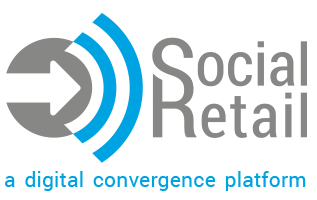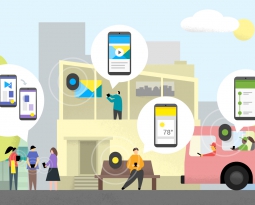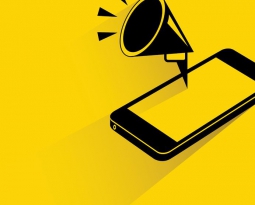Brick-and-mortar stores are finally getting the technology boost they needed to keep up with the high demands of tech-savvy customers. As the internet matured over the past decade and a half, online consumers developed a comfort zone of the types of content and features they liked to see.
Now, that comfortable realm of exciting interactivity and on-the-fly information has worked its way into a physical setting. The advantages of in-store shopping and eCommerce immediacy have become married, largely thanks to new developments in proximity marketing. Customers can enjoy the on-demand experience of the web with new, fascinating, tangible facets worked in.
These exciting changes allow retailers to use simple, low-cost technology in cooperation with smartphones most shoppers already own to deliver unique, personalized and engaging brick-and-mortar shopping experiences. Here are some of the ways shoppers are going to encounter the differences this technology makes:
Customers Receive More Relevant Offers
With millions of data points being generated every second online, retailers have access to rich treasure troves of information that can increase their predictive abilities. eCommerce brands harness this data to increase the amount of relevant offers to consumers. The consumers get to enjoy not being bothered by things they are uninterested in, and brands enjoy higher sales lift and conversion rates.
With beacon technology and proximity marketing, this capability can be brought into store spaces. Customers can receive offers only for items they are actually near, and as sophistication increases they will receive offers tied to their purchase histories.
In fact, mobile marketing giant JiWire revealed a few months ago that 53% of consumers are willing to opt in to location sharing in order to receive more relevant advertising. 57% of consumers stated that they were more likely to engage with proximity-based advertising. 62% of them were likely to share these local deals with friends, either online or through word-of-mouth.
These numbers reveal that consumers are happier with more relevant ads than being bombarded with offers they do not want. Adding a proximity boundary to the equation means that customers can be captured at the right time and the right place with a product relevant to their interests that they can actually pick up with their hands.
Stores Become Digital Playgrounds
Bland, sanitized retail spaces were one of the prime reasons overzealous pundits were prematurely sounding the death knell of brick and mortar retail several years ago. While many major brands certainly took a beating during this period, they were also investing in the latest technology to stay afloat. That investment has begun to pay off, and retailers like Macy’s are succeeding with flying colors at branching digital and physical strategies.
The fruits of these efforts are that now customers can walk into a retail store and have fun just interacting with digital displays. Browsing passively on your couch is one thing, but being able to get up and move around in a store to discover new things is an adventure. Promises offered by AR (altered reality) technology and geofencing are now coming to fruition with stores where offers are like scavenger hunts. Certain displays yield interesting product information, and others could reveal an offer just waiting for you to walk by.
Foot traffic on the sidewalks can even participate, with exterior beacons drawing passersby into the store. Adding digital signage to the mix allows shoppers to have a fully interactive experience that immerses them within the customer journey and rekindles the joy of in-person browsing.
Friction Reduced Between Digital Research and Browsing
More than 80% of shoppers have their phones with them while shopping, according to a 2013 Vibes study. 49% of them are looking up competitors to price check and 49% are researching product reviews.
These trends have only likely increased in the two years since the study, meaning more shoppers than ever are glued to their smart phones to find out more information than the shelves and displays alone are giving them.
Stores like Best Buy began to facilitate this behavior with QR codes, but proximity marketing through beacons makes it more seamless than ever. Shoppers automatically receive product information or unique offers, and all they have to do is have the branded app open. This interactivity allows retail spaces to become digital showrooms with rich sources of product information on tap.
Demands for greater relevancy and more interesting retail spaces have finally become answered through all of these benefits. Shoppers are discovering all over again why physical shopping can be just as joyous as browsing online. Brands that take advantage of these proximity marketing applications are seeing significant ROI and greater foot traffic in their store.
To find out how easy managing beacons can be, take a look at our Digital Social Retail product page.










